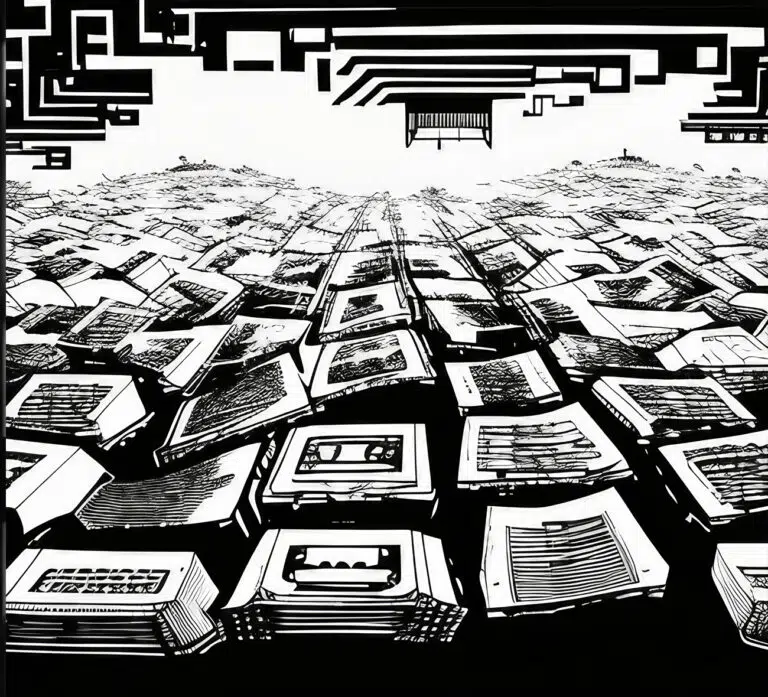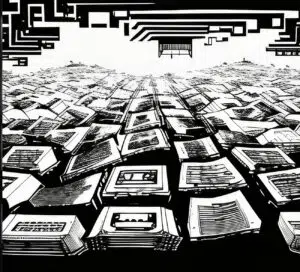In the latter part of 2021, there was an unprecedented mainstream fascination with non-fungible tokens (NFTs) that seemed to reach a boiling point. The market skyrocketed by a staggering 21,000%, surging to an astonishing $17.6 billion, as confirmed by Nonfungible.com and L’Atelier.
As NFTs presented novel opportunities for engaging with customers, creating a sense of community, and generating revenue, it was inevitable that innovative applications of NFTs in the realm of luxury fashion would begin to appear.
Luxury brands such as Prada, Burberry, and Dolce & Gabbana have been actively exploring the digital space and devoting time to integrating NFTs into their marketing campaigns and product lines. They’re aiming to leverage the emerging trend to offer exclusive, unique, and memorable experiences to their clientele.
You might wonder, how do NFTs connect with fashion? NFTs are one-of-a-kind digital tokens that serve as proof of ownership for an asset. These tokens are traded safely, with transaction history kept on a blockchain — an open, digital ledger — to ensure transparency regarding authenticity and ownership.
Usually, NFTs are linked to digital assets like pictures or videos, but they’re increasingly used to certify the ownership of tangible goods, including artwork, real estate, and, of course, clothing.
So, what are NFTs in fashion? Fashion NFTs come in various shapes and sizes, ranging from virtual outfits that customers can do in virtual settings, digital content that owners can interact with, or digital replicas of physical pieces. These tokens present a new realm of creative possibilities for designers and retailers, allowing them to extend the boundaries of the fashion industry and forge new connections with their customers.
The emergence of NFTs has unlocked a chance for fashion brands to tap into a new cohort of customers, who relish generating and collecting digital content, as well as possessing exclusive and unique digitized curiosities. The inventive application of NFTs can also help luxury brands create excitement around their diffusion lines, the more relaxed and affordable offshoots of their main brands. Moreover, even small businesses can experiment with NFTs, and offer them for sale on digital shopping platforms such as KnownOrigin, Nifty Gateway, and OpenSea.
Numerous brands are merging NFTs with tangible items that customers can wear. This merging of tokens with physical counterparts is enticing customers from all corners of the world. Before NFTs, a product’s digital replica could only be produced after its physical version was finalized. However, with the advent of NFTs, a digital twin can now be crafted at any stage of the manufacturing or sales process. For many brands, digital twins have become a valuable tool for enhancing production decisions and testing different facets of product design, such as sizing, form, and hue.
NFTs have opened up a new frontier in fashion, allowing brands to create entirely virtual stores where customers can buy and wear virtual fashion items. These digital stores enable designers to extend their creativity by exploring novel materials, shapes, and colors that may not be feasible or practical in the physical realm. NFT-powered virtual stores also offer the opportunity for brands to interact with customers in an immersive, hyper-realistic, and personalized manner. Customers can “try on” clothes, experiment with new styles, and connect with other like-minded shoppers in a virtual environment. This concept of virtual shopping and the use of NFTs in fashion has the potential to revolutionize the industry, opening up new possibilities for creativity, sustainability, and customer engagement.
NFTs have recently unlocked an exciting new area in fashion: Metaverse Fashion. This concept involves designing and creating digital garments that people can wear within virtual worlds or games. With the growing popularity of metaverse platforms such as Decentraland, Somnium Space, and The Sandbox, brands have the opportunity to offer customers unique and exclusive digital clothing that can be worn in these immersive environments.
Fashion houses can collaborate with digital artists and designers to create hyper-realistic and fantastical designs that would not be possible in the physical world. These NFT-powered digital garments can be traded on blockchain platforms, providing a new revenue stream for both designers and consumers. Moreover, this nascent concept of Metaverse Fashion could lead to a new kind of fashion culture, where people can express themselves and explore their identities in the digital realm.
The meteoric rise of NFTs in 2021 may have subsided, but their impact on the future of fashion remains a hotly debated topic. Despite this cooling trend, the market still boasts a substantial number of active buyers, and the amount spent on NFTs remains high compared to the pre-2021 levels. This indicates that consumers still hold a strong interest in NFTs, and it is not just a passing fad.
The involvement of high-end fashion brands in the NFT market could be the key to unlock further growth. As the fashion industry continues to embrace the possibilities offered by NFTs, it is likely that their role in shaping the future of fashion will only grow stronger.






